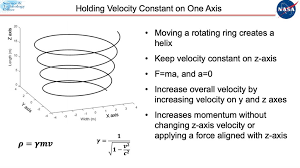
Breaking News
 Palantir's "Gotham" A.I. SURVEILLANCE SYSTEM And Peter Thiel's 4-Part Series ON TH
Palantir's "Gotham" A.I. SURVEILLANCE SYSTEM And Peter Thiel's 4-Part Series ON TH
 The Big List Of 18 Things That Are Going To Happen Within The Next 40 Days
The Big List Of 18 Things That Are Going To Happen Within The Next 40 Days
 'House of Cards' Star Robin Wright is Latest Celeb Fleeing to Europe
'House of Cards' Star Robin Wright is Latest Celeb Fleeing to Europe
 Your clothes hold a frequency.
Your clothes hold a frequency.
Top Tech News
 Neuroscientists just found a hidden protein switch in your brain that reverses aging and memory loss
Neuroscientists just found a hidden protein switch in your brain that reverses aging and memory loss
 NVIDIA just announced the T5000 robot brain microprocessor that can power TERMINATORS
NVIDIA just announced the T5000 robot brain microprocessor that can power TERMINATORS
 Two-story family home was 3D-printed in just 18 hours
Two-story family home was 3D-printed in just 18 hours
 This Hypersonic Space Plane Will Fly From London to N.Y.C. in an Hour
This Hypersonic Space Plane Will Fly From London to N.Y.C. in an Hour
 Magnetic Fields Reshape the Movement of Sound Waves in a Stunning Discovery
Magnetic Fields Reshape the Movement of Sound Waves in a Stunning Discovery
 There are studies that have shown that there is a peptide that can completely regenerate nerves
There are studies that have shown that there is a peptide that can completely regenerate nerves
 Swedish startup unveils Starlink alternative - that Musk can't switch off
Swedish startup unveils Starlink alternative - that Musk can't switch off
 Video Games At 30,000 Feet? Starlink's Airline Rollout Is Making It Reality
Video Games At 30,000 Feet? Starlink's Airline Rollout Is Making It Reality
 Grok 4 Vending Machine Win, Stealth Grok 4 coding Leading to Possible AGI with Grok 5
Grok 4 Vending Machine Win, Stealth Grok 4 coding Leading to Possible AGI with Grok 5
NASA Inertial Drive With a Helical Engine Using a Particle Accelerator

Burns goal is to use proven physics and technology
• Focus on extreme duration
• Current state-of-the-art is not sufficient, but has potential to scale
Megawatts of power + space-rated synchrotron = 1 N of thrust
• Not a compelling reason to build this engine
• However
• Equivalent Specific Impulse over 10^17
• "Net" power less than 10 watts
• Options for increasing thrust and efficiency
• Technology is extension of space flown hardware
• Many technical challenges ahead
• Basic concept is unproven
• Has not been reviewed by subject matter experts
• Math errors may exist!
A new concept for in-space propulsion is proposed in which propellant is not ejected from the engine, but instead is captured to create a nearly infinite specific impulse. The engine accelerates ions confined in a loop to moderate relativistic speeds, and then varies their velocity to make slight changes to their mass. The engine then moves ions back and forth along the direction of travel to produce thrust. This in-space engine could be used for long-term satellite station-keeping without refueling. It could also propel spacecraft across interstellar distances, reaching close to the speed of light. The engine has no moving parts other than ions traveling in a vacuum line, trapped inside electric and magnetic fields.

 HERE COMES THE MOTHERSHIP
HERE COMES THE MOTHERSHIP

